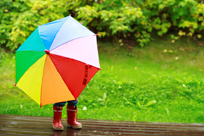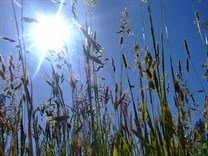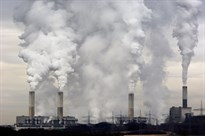There is a lot of talk about climate change. Here are some
questions to consider.

What's the difference between weather and
climate?
Time. Weather consists of the short-term changes in our
atmosphere, such as changes in temperature, humidity, atmospheric
pressure and so forth. Weather can change from minute-to-minute,
hour-to-hour, day-to-day and season-to-season.
Climate is the average weather for a particular region over a
longer period of time, such as years, decades or more.
Why study climate?
Apart from being one of the coolest jobs (think of explorers
drilling through the thick ice in Antarctica and guiding unmanned
planes into the air to measure stuff) it's super important to know
what's going on with our climate.
Think about how important it is to know what the weather will be
tomorrow - will you be warm in just a shirt? Will it be raining
when you are supposed to play sport? Will clouds cover up your
solar panels? Knowing about the climate is even more important.
Climate can affect people, animals, plants and even the shape of
our coastlines all around the world. If our planet warms, deserts
might get larger and glaciers may disappear. When glaciers melt,
the water will flow into the oceans causing sea levels to rise.
Rising sea levels might cause islands to disappear. Pretty
important stuff, don't you think?
Has the climate on our planet always been the
same?
Scientist have worked out that our planet is about 4.5 BILLION
years old. Throughout time the climate has always changed -
temperatures rise and fall, because of natural forces including
volcanic eruptions, the movement of continents and oceans, natural
changes in the levels of greenhouse gases in the atmosphere,
changes to the sun's intensity, and even variations in the Earth's
orbit around the sun (called milankovitch cycles, try
pronouncing that!).
Changing temperatures cause lots of different things on our
planet, such as growing and shrinking glaciers, and rising and
falling sea levels. Did you know that scientist found old beaches
in the Murray Darling Basin
hundreds of kilometres from today's shoreline and over 100
meters
above sea level?
So what's the fuss?
Speed! Over the past 50 years our atmosphere has warmed by 0.13
degrees celsius per decade. It doesn't sound like much, but it is
if you compare it to the past. During past ice ages and during
warmer periods between them our atmosphere has warmed slowly
(around 0.01 degrees celsius per decade). Current warming of more
than 10 times as fast doesn't give plants or animals the chance to
adapt to changing climates. Certainly not enough time to grow less
hair or flippers!
What changes are happening around me today because of
climate change?
Each decade has been warmer than the previous decade since
the 1950s'
(quote from CSIRO/BoM state of the climate 2012).
Scientist all over the world study what's changing and this is
what they found:
- global temperatures have risen by 0.8 degrees celsius during
the past 100 years
- sea levels are rising at a rate of 3.1 mm per year
- rainfall patterns are changing
- the oceans are warming
- there is more extreme hot weather, such as heat waves, and
fewer cold extremes
- mountain glaciers and polar ice sheets are melting.
Is it us?

Hate to say, but yes it is. We do a lot of things that release
CO2 and other
greenhouse gases into our atmosphere, which would otherwise be
trapped deep under ground or in trees. We dig up coal and gas and
power our lives with it. We chop down trees and build houses and
cities from them. Burning fossil fuels for energy releases
pollution including CO2 and other greenhouse gases
into the air, which drives the speedy climate change we are seeing
today. Ice core records show there's way more CO2 in
our atmosphere than there used to be (390 parts per million (ppm)
today, compared to between 172 and 300 ppm of the last 800,000
years).
What happens if we don't reduce greenhouse
emissions?
As we explained in the Good Science section, scientists use
 supercomputers and
mountains of data collected from all over the world to work out
what our future climate may be like. Here are some of the things
they've worked out:
supercomputers and
mountains of data collected from all over the world to work out
what our future climate may be like. Here are some of the things
they've worked out:
- temperatures in Australia could increase by up to 5 degrees by
2070
- sea levels could rise by up to 80 cm by the end of the century
(baseline of 1990)
- we are likely to see more severe and intense extreme climatic
events.